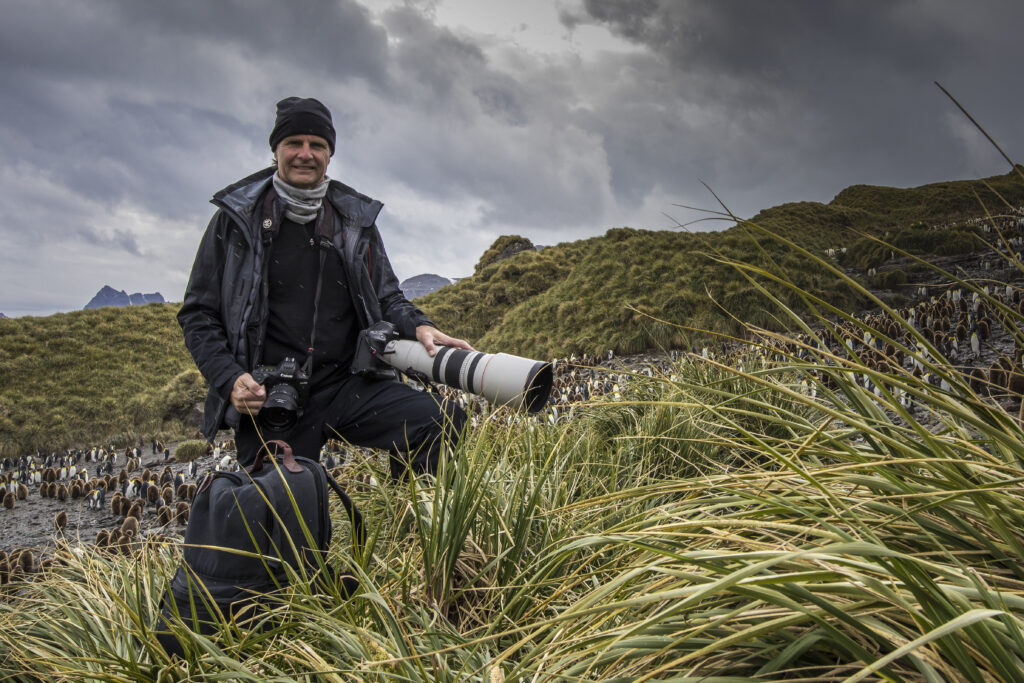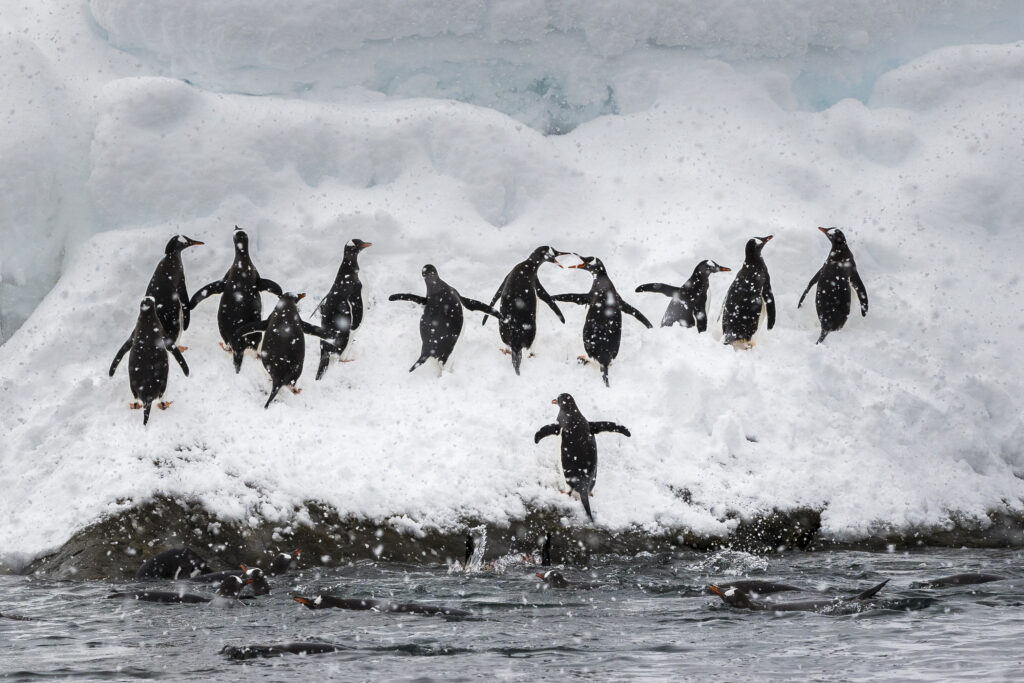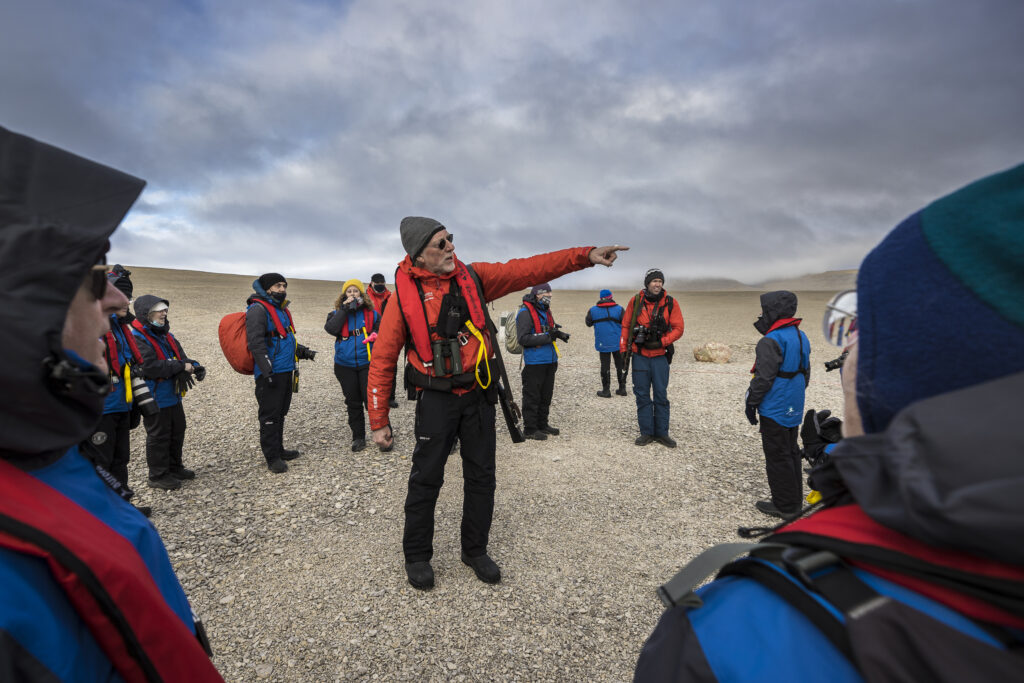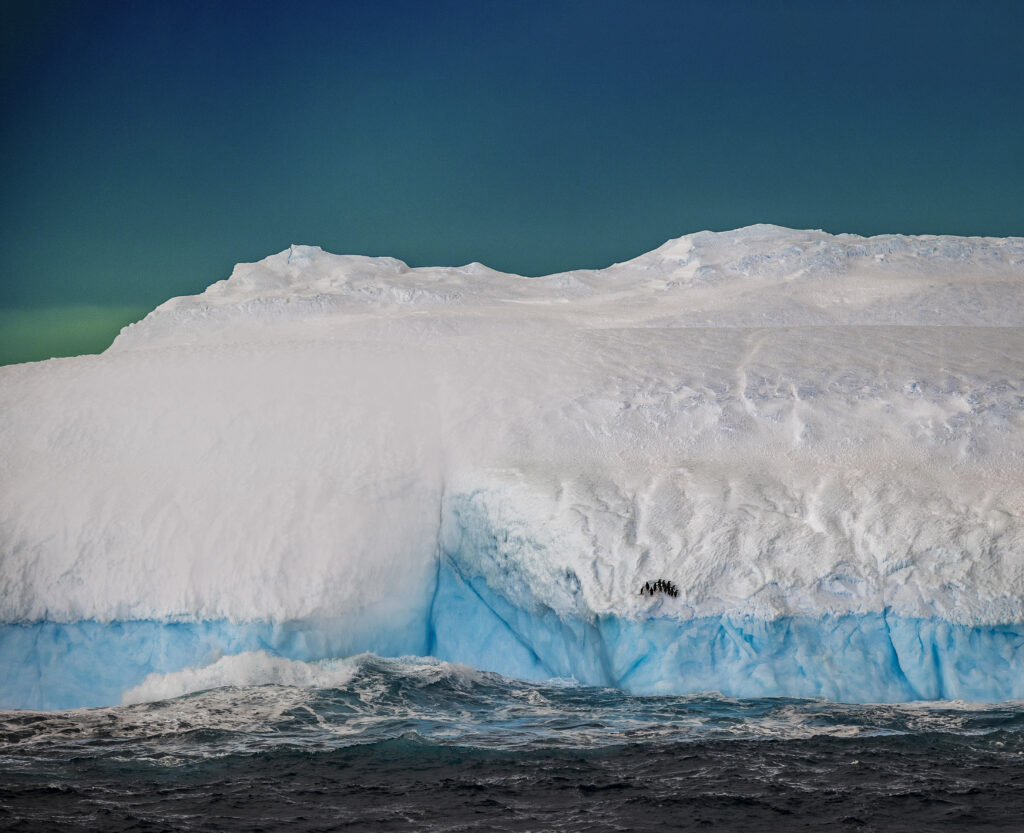Richard I’Anson is a visual storyteller, freelance travel photographer, Canon Master and one of the best landscape photographers in the world, with over three decades of experience globetrotting and capturing the natural world’s most rare and special moments.
But it’s not just the team at AE Expeditions that thinks he’s the best – he’s been awarded Australia’s Top Travel Photographer in addition to winning a plethora of other industry awards.
A regular Special Guest Photographer on expeditions across the globe, we interviewed him to find out more about his remarkable journey turning his passion into a profession. Richard shares his insights into the world of travel photography, offering a glimpse into what fuels his creative fire, his top tips to capture moments that resonate with viewers and what he is most looking forward to as a Special Guest Photographer on upcoming voyages.
I soon realised that not only was there a wonderful connection between travel and photography, but that I loved to travel just as much as I loved to take pictures.
Richard I'Anson

How did you get started in photography and what motivated you to pursue it professionally?
I received my first camera as a birthday present from my parents when I was 16. I shot a roll of colour negatives over the weekend and was hooked. From the moment I saw the prints a few days later, I knew I wanted to be a photographer.
As soon as I could, I started travelling in Australia and then did a seven-month overseas trip. I soon realised that not only was there a wonderful connection between travel and photography, but that I loved to travel just as much as I loved to take pictures. I really enjoy the process of discovering and photographing new places, but equally thrive on the challenge of delving deeper and deeper into destinations and subjects that I’ve photographed before.
What types of subjects or scenes do you enjoy photographing the most, and why?
As a travel photographer, I photograph just about everything, and I think my strength over the years is that I actually do get excited about shooting just about everything. Ultimately, though I most enjoy the transformative power of light, and I work very hard to be in the right place at the right time in order to capture my subjects in the most beautiful and dramatic light.

How important is equipment to how you work?
Choice of equipment is important. It’s the first building block in a series of creative decisions that leads to capturing images that reflect a personal photographic vision. A good photographer can take good pictures of any subject on any camera with any lens; however, matching your gear to the kinds of shots you want to take and the kind of travel you prefer makes photography more enjoyable and more productive.
What are your biggest accomplishments, both personally and professionally?
Professionally, managing to make a living as a travel photographer for over 30 years and specifically publishing books of my work, which was my goal right from the start.
Personally, being able to share my travels with my two daughters and introduce them to diverse cultures and environments from a young age.
What is the most memorable project you've worked on?
The Tales by Light documentary series. I was one of five photographers featured in the first series. The film delved into life as a photographer and we spent 30 days in Bhutan, Nepal, Ladakh and other locations in India on two separate trips. It’s very intense having your every action filmed. It’s now screening on Netflix.
I’ve always said that capturing great pictures is rarely done in comfortable conditions, so you just have to be prepared with the right gear for the situations you anticipate working in.
Richard I'Anson

What are some of the challenges of capturing images in difficult settings or conditions?
The fact is I really like shooting in so-called ‘difficult conditions’, such as when it’s snowing, windy or stormy (or all three) as it is at these times that there is an opportunity to capture unique images. The hardest thing in wet conditions is keeping the lens dry as drops of water ruin the image and are very hard to remove in post-processing.
What are your top tips you like to share with expeditioners to help them capture the polar regions and beyond?
1. Learn the Technical Stuff
No matter what camera you use, make sure you know how to get correct exposures in either aperture or shutter speed priority mode by adjusting the ISO, shutter speed and aperture controls quickly so that the mechanics of taking a photograph become second nature. You’ll then be able to concentrate on, and enjoy, the creative side of picture taking, seeking out interesting subjects and great light. Plus, you’ll have a much better chance of capturing those fleeting moments and expressions that make unique images.
2. Compose for Impact
Make sure your photographs have a clear point of interest. This is usually the thing that caught your eye in the first place and should be the element around which your composition is based. Focus carefully on the subject to ensure it is sharp and aim to place it away from the centre of the frame. Don’t assume that your eye level or the first place from where you see your subject is the best viewpoint. A few steps left or right, going down on one knee or standing on a step can quickly improve a composition.
3. Study the Light
The ability of light to transform a subject or scene from the ordinary to the extraordinary is one of the most powerful tools at the photographer’s disposal. There’s light and there’s the ‘right light’. The keys to the right light are its colour, quality and direction. As your eye settles on a potential subject, note where the light is falling and select a viewpoint from where the light enhances your subject. There is an optimal time of day to photograph everything, so be prepared to wait or return at another time if you can’t find a viewpoint that works. However, most subjects are enhanced by the warm light created by the low angle of the sun in the one to two hours after sunrise and before sunset so plan to be at the most important places early and late in the day.

>> View more of Richard I’Anson’s photography
What are you most looking forward to about your upcoming voyages with Aurora?
My next voyages are to the Antarctic Peninsula, one at the beginning of the season and one toward the end, followed by Costa Rica and Panama. I’ve been to the Antarctic Peninsula several times and absolutely love it, both for the photography and the travel experience. I’m looking forward to revisiting places I know at a different time of year and in different conditions as well as getting to some other locations for the first time, broadening my image collection and knowledge of the area. It will be my first trip to Costa Rica and Panama, so that alone gives me plenty to look forward to.
Join Richard on an upcoming expedition
Richard will be joining us as a Special Guest Photographer on Across the Antarctic Circle (ANC009S), departing 24 February 2024, as well as Costa Rica & Panama Canal (CRP004G), departing 19 April 2024.
Costa Rica & Panama Canal
Discovery Expedition
Welcome to AE Expeditions’ Costa Rica and the Panama Canal voyage. Immerse yourself in the remarkable coastlines of Costa Rica and Panama. Costa Rica is one of the most biodiverse regions...
12 Days
From GBP £8,396.00/pp
Across the Antarctic Circle
Polar Expedition
Thank you for joining AE Expeditions on our Across the Antarctic Circle expedition. Venturing below the Antarctic Circle is about more than just earning bragging rights. It is the chance to enter a...
13 Days
From USD $16,316.00/pp




